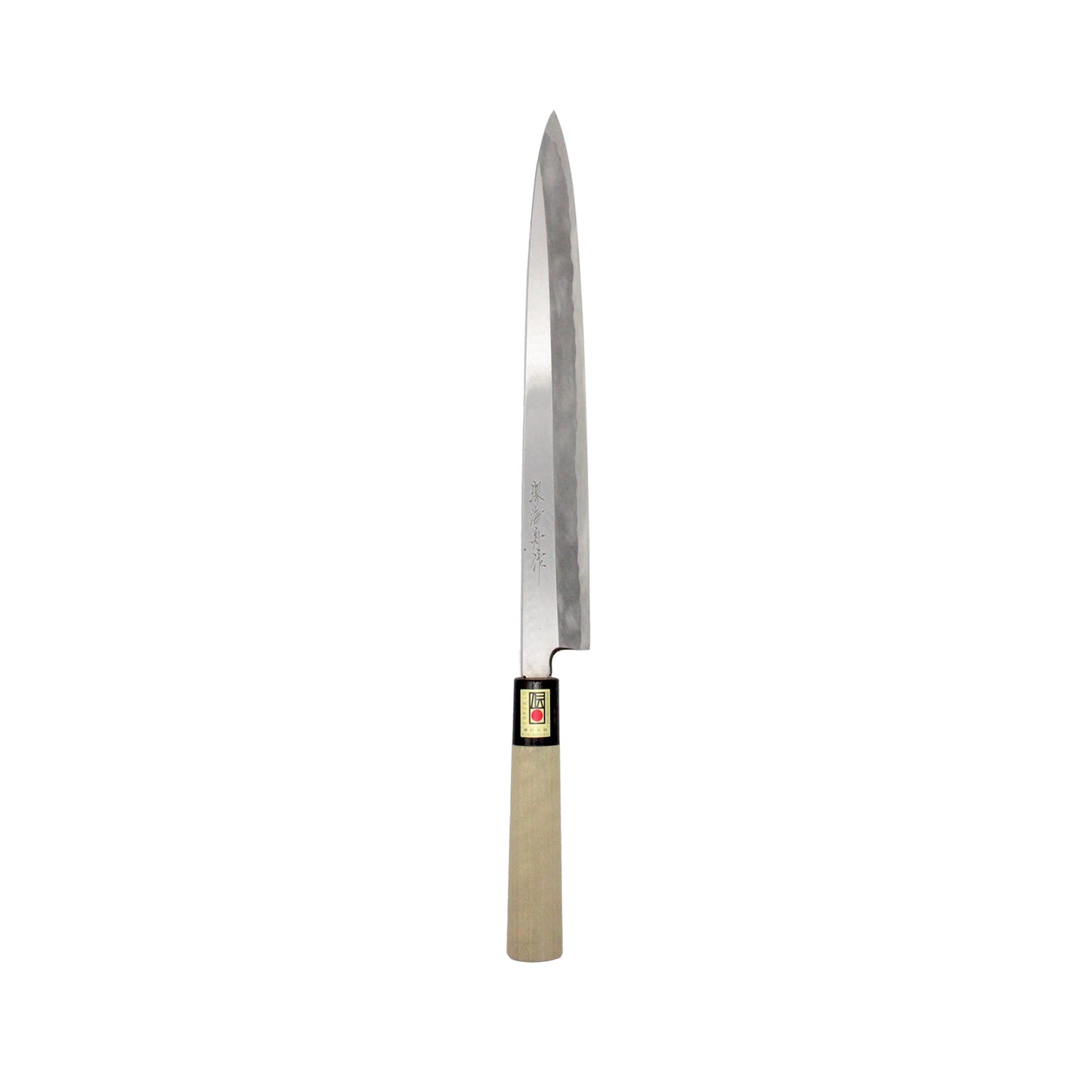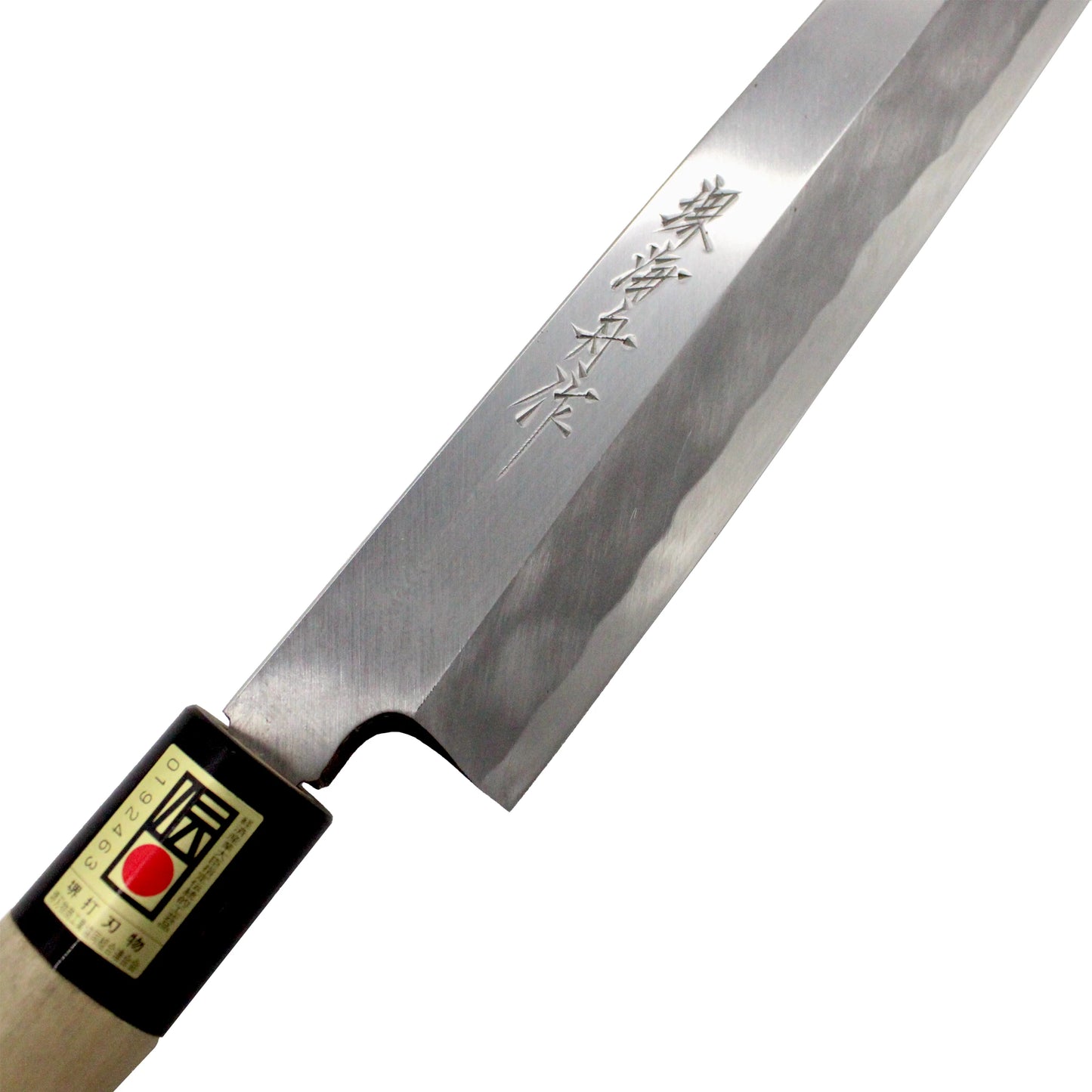The Yanagiba, meaning "willow blade knife" is a traditional Japanese knife specifically designed for slicing raw fish and seafood, making it a staple in sushi and sashimi preparation. It features a long, slender blade, which allows for clean, single-stroke cuts to help preserve the texture and appearance of delicate fish. The pointed tip allows for precision when starting a cut and is useful for detailed trimming or when removing skin. It also excels at paper thin slices for carpaccio.
Western knives, often made from softer stainless steel, are less prone to chipping but dull much more quickly and will eventually need to be professionally sharpened to restore their edge.
This knife features a single-bevel edge, allowing for extremely fine and precise cuts. This design also helps prevent the fish from sticking to the blade.
Hand-sharpened by master craftsman Tahara Shunichi in Sakai, Osaka, a city famed for its blades, this knife is made from white steel, a pure steel prized for its hardness and sharpness. It is made by combining iron with carbon without adding other compounds. With a Rockwell hardness of HRC 64–65, it holds an extremely fine edge, perfect for slicing without tearing or crushing.
-
Blade length: 300mm
-
Steel: White Steel (Shirogami) – a hard carbon steel known for its razor-sharp edge
-
Finish: “Migaki” A polished but not shiny finish designed to showcase the clean lines of the blade
-
Handle: Octagonal wooden handle with a water buffalo horn ferrule for durability and comfort
-
Edge: Single bevel (suitable for right-handed users)
Japanese knives require a little bit more maintenance than Western knives as white steel can rust if not dried properly, the reward is a blade that holds a razor-sharp edge far longer. With minimal effort, you can keep these knives in top condition yourself, without the need for regular professional sharpening.
To maintain your blade:
- Dry thoroughly after each use to avoid moisture buildup.
- Sharpen regularly using a water whetstone (available here) to preserve the edge and prolong the life of the knife.
- Avoid using a honing rod, which can damage the fine edge of Japanese blades.
With the right care, these blades will remain sharp and precise for years to come.





